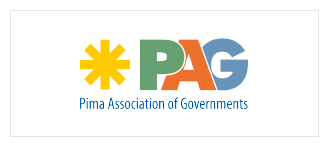 People with Disabilities: Education, Employment, and Earnings in Tucson, Arizona MSA
People with Disabilities: Education, Employment, and Earnings in Tucson, Arizona MSA
The second article of the disability series sets the stage for a closer examination of the multifaceted nature of education, employment, and income among individuals with disabilities.
The educational attainment, employment opportunities, and income levels of people with disabilities are shaped by a range of factors and may differ based on the type of disability they have. Attaining a higher level of education can improve the chances of finding employment and increase earnings for individuals with disabilities. Moreover, education plays a crucial role in overcoming barriers and promoting inclusivity within society.
Education
According to data from the U.S. Bureau of Labor Statistics (BLS), earnings increase and unemployment decreases as educational attainment rises. Disabled people with a bachelor’s degree are significantly more likely to obtain employment than those with a high school diploma and no postsecondary degree. In 2022, the employment rate for individuals with disabilities holding a bachelor's degree or higher was 30.8%, while those with some college or associate degree stood at 23.9%, and high school graduates were at 16.4%.
In 2022, the educational achievement of individuals with disabilities in the U.S., Arizona, and Tucson MSA was lower compared to the overall population (age 25 +). Nationally, 34.7% of individuals held a bachelor's degree or higher, while only 19.4% of individuals with disabilities achieved the same level of education. In Arizona, 21.1% of disabled individuals attained a bachelor's degree or higher, and in Tucson MSA, the percentage was 24.9%. These figures represent a difference of more than 11 percentage points compared to the general population. Arizona (34.8%) and the Tucson MSA (34.7%) had a higher percentage of disabled individuals with some college or associate's degree compared to the national average for that demographic group (28.8%). Table 1 displays the educational attainment of the disabled people (age 25+) to the educational attainment of the total population.
Table 1: Educational Attainment of the Disabled People (Age 25+) Compared to the Educational Attainment of the Total Population (Age 25+) (2022)
In 2022, the Tucson MSA had a larger share of residents with disabilities with a bachelor’s degree or higher at 24.9%, than the nation (19.4%) and the state (21.1%). In contrast, Tucson posted a relatively small share of people with disabilities who reported a high school or equivalent as the highest education level (25.3%) when compared to the U.S. (33.4%). Figure 1 illustrates the percentage of population with disabilities (25+) by level of education in the U.S, Arizona and the Tucson MSA.
Figure 1: Percentage of the Population With Disabilities by Level of Education (2022)
Children with disabilities may have limited social and economic opportunities according to UNICEF. As highlighted by Aron and Loprest (2012) the special education system has given children with disabilities greater access to public education, established an infrastructure for educating them, helped with the earlier identification of disabilities, and promoted greater inclusion of these children alongside their nondisabled peers.
The Individuals with Disabilities Education Act of 2004 (IDEA) authorizes formula grants to states as well as discretionary grants to higher education institutions and other non-profit organizations to support research, demonstrations, technology and personnel development, and parent training. During the 2021-22 school year, 72,164,737 people in the U.S. aged 6 to 21 years enrolled in school. Of those, 6,881,439, or 9.5%, received special education services under the IDEA, Part B. Among 50 states, Arizona ranked 15th (8.6%) in receiving special education under the IDEA and fifth among 10 western states. Hawaii had the smallest percentage (6.2%), while Maine had the largest percentage (13.0%) (See Figure 2).
Figure 2: Percentage of Disabled Students Receiving Special Education Services Under the IDEA, by State, Ages 6 to 21, School Year 2021-22
There were 137,719 students in Arizona ages 6 to 21 who received special education in the school year 2021-22. Of these, 39.6% were in the specific learning disabilities category, followed by the speech or language impairments category (15.3%) and other health impairments (12.0%). These three categories alone represented nearly 70% of the total reported disabilities. Figure 3 shows the number of students in Arizona, served under IDEA, by disability type.
Figure 3: Number of Students in Arizona by Disability Type, Ages 6 to 21, School Year 2021-22
During the 2021–22 school year, more than 80% of students with disabilities in Arizona were either white (35.8%) or Hispanic/Latino (46.8%). Additionally, the percentage of students with disabilities who are non-English Learners (non-EL) was higher (89.3%) than the percentage of students who were English Learners (EL), which was 10.7%.
It's crucial to offer enhanced special education services to disabled students, as these opportunities will enable them to secure higher-paying employment opportunities and prevent them from abandoning their pursuit of higher education.
Employment
Education provides individuals with disabilities the opportunity to acquire skills and knowledge relevant to the job market.
A study by Bonaccio et al. (2020) showed that people with disabilities still do not have the same access to work opportunities as do their counterparts without disabilities, despite legislation on diversity in the workplace.
The population of 18- to 64-year-olds in Arizona was 4.2 million in 2022, which encompasses the core working ages for most individuals. Employment rates were substantially lower for individuals who had a disability compared to those without, 42.9% and 76.4%, respectively. The same held true for the percent working full-time, which was 33.9% for people with a disability compared to 60.6% for those without. A larger portion of people with disabilities were not in the labor force compared to those in the labor force - in other words, not looking for work. Median earnings for those aged 16 years and older reflect less pay for individuals that have a disability. Table 2 highlights select employment characteristics in Arizona for those with and without a disability.
Table 2: Employment Characteristics With and Without a Disability in Arizona (2022)
Arizona's employment rate of 42.9% for individuals with a disability in 2022 was 2.7 percentage points higher than the U.S. at 40.2%. Nevertheless, Arizona's rate fell far behind the rate of other states. In fact, Arizona ranked 19th out of all states and fifth out of the 10 MAP Dashboard states. North Dakota ranked the highest with 55.5% and West Virginia was last with only 30.7% employed. Figure 4 highlights the percent of the population with a disability that was employed for the MAP Dashboard states.
Figure 4: Percentage of Individuals With Disabilities Who Were Employed, by State (2022)
In 2022, of those with a disability, 22.4% were employed in the education and health services industry nationally, 21.4% in Arizona, and 23.0% in Tucson. The retail trade industry ranked second in the United States (13.3%), Arizona (14.5%), and Tucson (14.6%) in terms of employment opportunities for people with disabilities. The percentage of employed Individuals with disabilities in the professional, scientific, and management sectors was higher in Tucson (13.9%) and Arizona (12.7%), compared to the U.S. (11.1%). The same held true for the percent of workers in the finance and real estate sector where Arizona posted 2.6 percentage points higher than in the U.S. Only 1.0% of disabled workers in Arizona and Tucson were employed in the agriculture, mining, forestry, fishing, and hunting industries. Figure 5 shows the employment rates for the disabled population by industry. Click on the drop-down menu to view the U.S., Arizona, or Tucson.
Figure 5: Employment Shares of the Disabled Population by Industry (2022)
Figure 6 illustrates the employment rate for individuals with disabilities in the U.S., Arizona, and the Tucson MSA, calculated as the number of disabled people that are employed divided by the total disabled population. Arizona witnessed a growth of 9.4% between 2015 and 2022 while, in Tucson, this rate increased by 7.6%. The national rate rose by 6.2%.
Figure 6: Employment Rates for the Disabled Population (2015-2022)
Earnings
Based on the most recent Census data, people with disabilities still lag behind their peers without disabilities in terms of earnings. According to the report 'Disabilities’ by the American Institutes for Research, earnings inequalities clearly exist between people with and without disabilities despite of their level of educational attainment. Surprisingly, the gap in earnings inequality widens as educational attainment increases. Workers with disabilities earn less than their non-disabled counterparts in terms of hourly, weekly, and monthly earnings.
The median annual wage for workers with disabilities (population 16 years and over) in the U.S. was $29,382 in 2022. Workers without disabilities earned $13,931 more per year on average. In 2022, workers with disabilities in the Tucson MSA reported annual median wages of $26,851. These median wages were $9,481 lower than those of non-disabled workers and $2,531 lower than the national average (Figure 7).
Figure 7: Median Annual Earnings by Disability Status (2022)
In 2022, among 10 western states tracked by the MAP dashboard, six surpassed the national annual median wages for workers with disabilities. Washington reported the highest annual median wages ($35,130) and Idaho the lowest ($24,448). Employees with disabilities in Arizona earned 3.5% more (i.e., $1,018) than the national median salary.
The annual median wages for workers with disabilities vary significantly by gender. Among 10 western states, women with disabilities have lower median wages than men with disabilities. In Arizona, disabled women earned 81.8% of what disabled men did. In Utah, disabled women made 62.9.% of what disabled men did (the largest disability gender wage gap). In Nevada, disabled women made 82.8% of what disabled men made, the smallest disability gender wage gap amongst tracked states. The ratio of male-to-female earnings indicates what a disabled female worker earns compared to the amount a male employee with a disability in the same position would receive. The interactive map in Figure 8 visualizes this difference (earnings gap) between male and female workers with disabilities among 10 western states in 2022.
Figure 8: Median Annual Earnings Gap by Gender Among 10 Western States (2022)
Education plays a vital role in improving the job prospects of individuals with disabilities. However, it is crucial to recognize that obstacles to accessing education and employment still exist. To ensure full participation in educational and employment opportunities, enhanced accessibility and inclusivity policies, as well as greater public awareness, are needed. Moreover, initiatives to fight discrimination and promote diversity and inclusion will continue to create a fair and accessible job market for all, including people with disabilities.
The first article in the MAP series on Disability can be found here: Disability Data Overview. This article explores the population, prevalence, and home environment of those with disabilities in the Tucson metropolitan area.
Source
Disability status data come from the 2022 American Community Survey (ACS) 5-year estimates published by the U.S. Census Bureau. The Census Bureau changed the way they handled questions on disability in the 2008 ACS, so current data are not comparable to previous ACS releases or the Census 2000. The percentage of the population of students with disabilities has been calculated using data reported by the Office of Special Education Programs (OSEP), Section 618 of the IDEA law, under Part B Child Count and Educational Environments. Section 618 of the Individuals with Disabilities Education Act (IDEA) requires that each state submit data about the infants and toddlers, birth through age 2, who receive early intervention services under Part C of IDEA and children with disabilities, ages 3 through 21, who receive special education and related services under Part B of IDEA.
References: Aron, L., Loprest, P., (2012), Disability and the Education System, The Future of Children 22 (1), pp. 97-122. Bonaccio S, Connelly CE, Gellatly IR, Jetha A, Martin Ginis KA., (2020), The Participation of People with Disabilities in the Workplace Across the Employment Cycle: Employer Concerns and Research Evidence. J Bus Psychol. 35(2), pp. 135-158. doi: 10.1007/s10869-018-9602-5.












